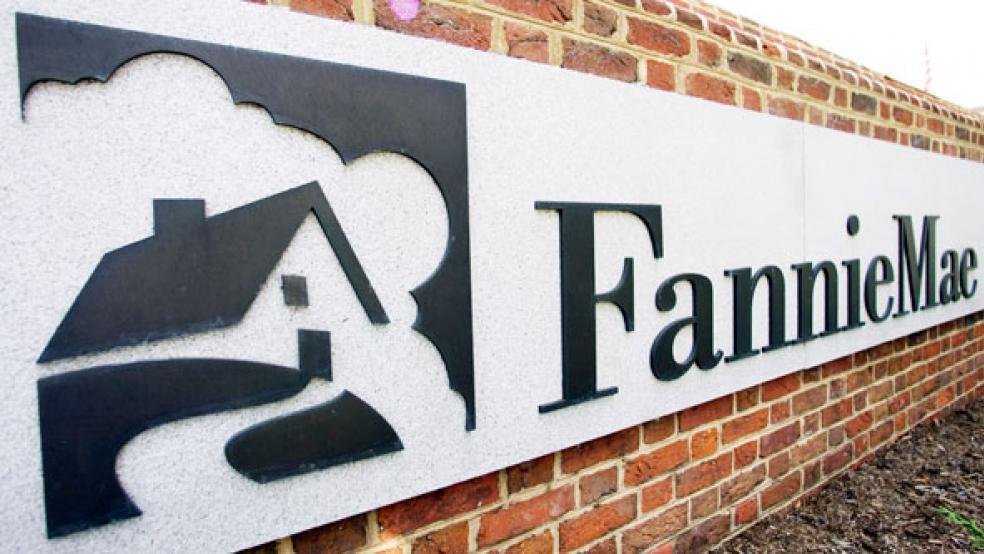The Obama administration Friday laid out an ambitious vision for U.S. housing finance reform, in which the government gradually diminishes its role and private investors return to the mortgage securities market.
But the plan doesn't specify how to overhaul or eliminate Fannie Mae and Freddie Mac, instead setting out three possible options for the mortgage giants, which have been operating under government conservatorship since September 2008. Under the landmark Dodd-Frank financial overhaul legislation approved last year, the Treasury Department was supposed to present to Congress by Jan. 31 a report on the government-sponsored enterprises (GSEs) to help lawmakers write legislation to reform the agencies.
"This is a plan for fundamental reform — to wind down the GSEs, strengthen consumer protection, and preserve access to affordable housing for people who need it," said Treasury Secretary Timothy Geithner said in a statement. "We are going to start the process of reform now, but we are going to do it responsibly and carefully so that we support the recovery and the process of repair of the housing market."
At stake are the health of the real estate market, economic growth and, some argue, the future of the 30-year fixed-rate mortgage. The challenge for policymakers is to attract private investors back into the mortgage market while retaining the benefits that Fannie and Freddie established — a liquid secondary mortgage market and greater access to homeownership. The administration and lawmakers are also attempting to prevent a repeat of the excessive risk-taking and inadequate supervision of the housing market that led to the 2008 financial crisis, while reassuring foreign investors in housing bonds and U.S. government debt.
"The government is committed to ensuring that Fannie Mae and Freddie Mac have sufficient capital to perform under any guarantees issued now or in the future and the ability to meet any of their debt obligations," the plan said, recommending that the firms reduce their portfolios by at least 10 percent each year as they wind down.
Through Freddie, Fannie, Ginnie Mae and Federal housing programs, the government currently supports 97 percent of mortgage securities that are issued each year. The two entities own or guarantee nearly three quarters of that amount, or $6 trillion in debt, which policy experts and stakeholders agree can’t be indefinitely sustained. Together, they've cost the government over $150 billion since the takeover.
The Treasury report recommended ending the advantage that Fannie and Freddie enjoy in the mortgage market by requiring them, over several years, to raise the fees they charge for guaranteeing mortgages to the same level that they would charge if they met capital standards applied to private banks. The report called for Congress to reduce the limits on home mortgages that Fannie and Freddie guarantee and recommended gradually increasing required down payments to 10 percent of the loan.
Under the plan, the Federal Housing Administration would return to its traditional role of supporting low-income homeowners, also through a combination of lower loan limits and higher fees and new support for rental housing. It calls for a new task force to ensure that federal agencies work together and with Congress to craft a smooth transition plan to a private sector-supported mortgage market, as well as developing a dedicated funding source for affordable housing. The Treasury emphasized its commitment to ongoing reforms in the mortgage industry to protect consumers and increased disclosure by loan originators and securitizers, as well as stronger capital standards and government oversight of risks to the entire financial system.
The three long-term options described by the white paper are to:- Limit government involvement to FHA programs aimed at low-income homeowners.
- Complement FHA with a emergency federal backstop that would only be used in times of crisis.
- Establish, alongside FHA, some kind of standing government-backed insurance that would be available for broader class of middle-income homeowners, but would be more limited than the current system.
The administration faces a hostile environment in Congress, with the new Republican-controlled House gearing up to oppose a continuing large government role in housing finance — through piecemeal legislation if need be. The mortgage giants have a controversial track record, from Freddie Mac's 2007 settlement of accounting fraud charges and criticism of high executive pay to ongoing practices related to foreclosure.
Administration aides had argued that offering a range of options would be a better strategy for the Treasury to win true reform through negotiation, rather than presenting a single plan for Fannie and Freddie that would draw criticism from all sides. Democrats are split on how to continue to meet affordable housing goals, how heavily regulated a new model should be and how big a role the government should play in guaranteeing mortgage debt versus simply providing insurance on the debt, perhaps for a fee.
Republicans are also split on the future of the agencies, with their traditional small government stance coming into conflict with their allies in the housing and financial services industry, who want a continued government subsidy. With the presidential election approaching, a real danger is that the future of Fannie and Freddie will become a political football without any real legislative action.
"We are committed to our immense responsibilities," Michael Williams, president and CEO of Fannie Mae said in a statement. "We are focused on doing our job well — funding the market, building a sound new book of business, cutting losses in our legacy book, helping distressed borrowers, stabilizing neighborhoods, and driving operational excellence. We will continue to draw from our reservoir of deep knowledge and experience to offer helpful input and pose important questions."


